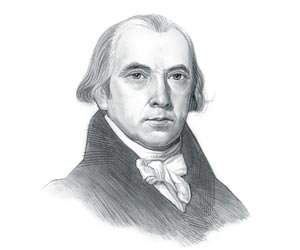|
|
|
|
|
The First Bank of the United States was in existence from 1791 to 1811. The Second Bank of the United States was in existence from 1816 to 1836.
History of the
Second Bank of the United States for kids: Background History of the First
Bank
History of the Second Bank of the United States for kids: War of 1812
The American System
The Banknotes
Facts about the Second Bank of the United States for kids Its twenty year charter
ran from February 1816 to January 1836. Plans were initially
formulated in 1814 by James J. Dallas, secretary of the treasury The United States government owned 20% of its capital but Second Bank of the United States while private investors owned the rest - it was still a privately held banking corporation. The Second was the envy of state banks because, although a commercial enterprise, it received all of the government’s deposits including foreign customs duties, it could make more loans. The institution was answerable to the US Treasury and Congress and subject to Treasury Department inspection The institution comprised of 25 directors, of which 5 were appointed by the President, subject to Senate approval It was initially headquartered in Carpenters' Hall, Philadelphia, the same as the First Bank It was the only banking institute permitted to have offices across the nation. The first president of the institute was William Jones, a political appointee who had gone bankrupt The institute was poorly run under William Jones, first extending far too much credit, then quickly restricting it. The restrictions on credit led to the Panic of 1819, often described as the first Important financial crisis in the United States. William Jones resigned his position in 1819 and was replaced by Langdon Cheves, a politician and attorney from South Carolina The Panic of 1819 was followed by a steep recession that saw unemployment soar, interest rates spike and the prices of farm goods plummet Poor management practices continued under Langdon Cheves who resigned in 1823 A wealthy politician from Philadelphia called Nicholas Biddle, who had already served on the Board of Directors, was elected to replace Langdon Cheves Nicholas Biddle successfully turned the institute around bringing a new period of economic expansion In 1824 its new building was opened at 420 Chestnut Street in Philadelphia In 1828 Andrew Jackson was elected President of the U. S. and brought with him a strong distrust of banks in general which started the Bank War and a fight against unfair business practices. In 1832 a request was submitted to Congress to renew the charter four years before the charter was due to expire. President Andrew Jackson vetoed the bill to re-charter in 1832 In 1833 President Andrew Jackson ordered all federal government deposits to be removed from the Second Bank of the United States and deposited into state banks. The Second Bank’s charter expired in 1836 and the bank closed Nicholas Biddle attempted to keep the institution going as a commercial bank, but the project failed and closed in 1841. |
| US American History |
| 1801-1828: Evolution Era |
|
|
|
|
|
First Published2016-04-19 | |||
|
Updated 2018-01-01 |
Publisher
Siteseen Limited
| ||
|
|

